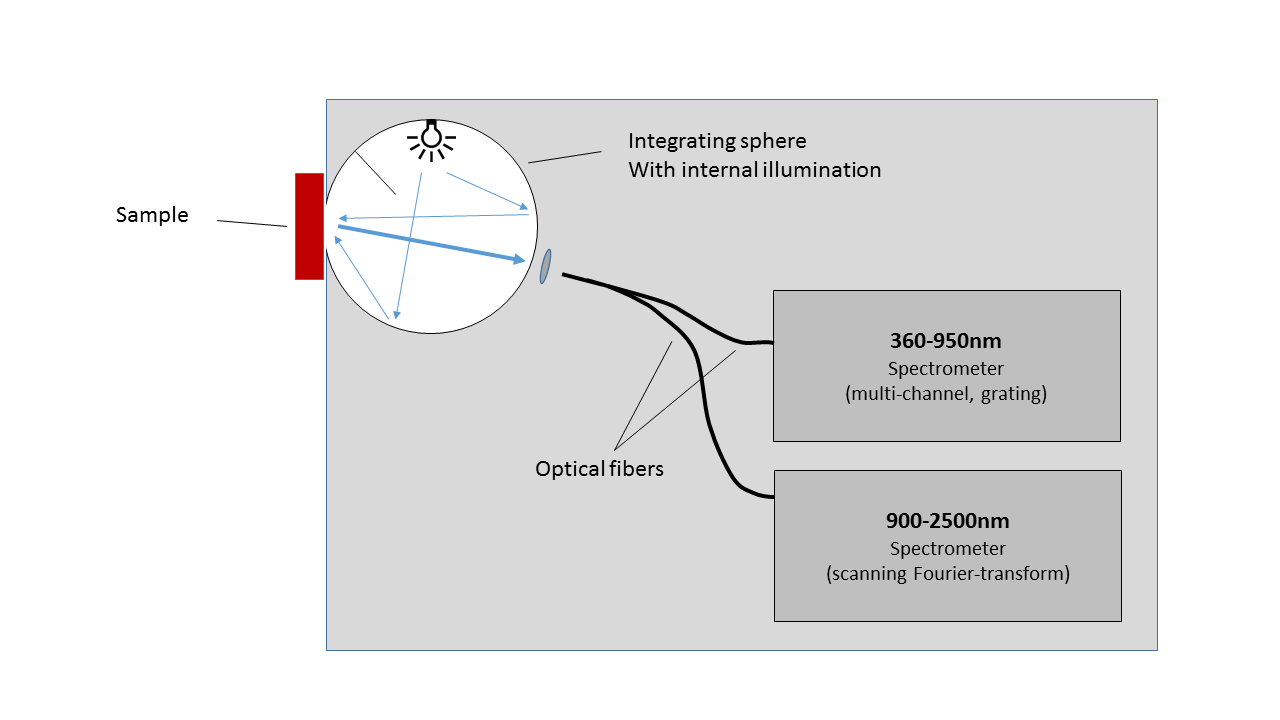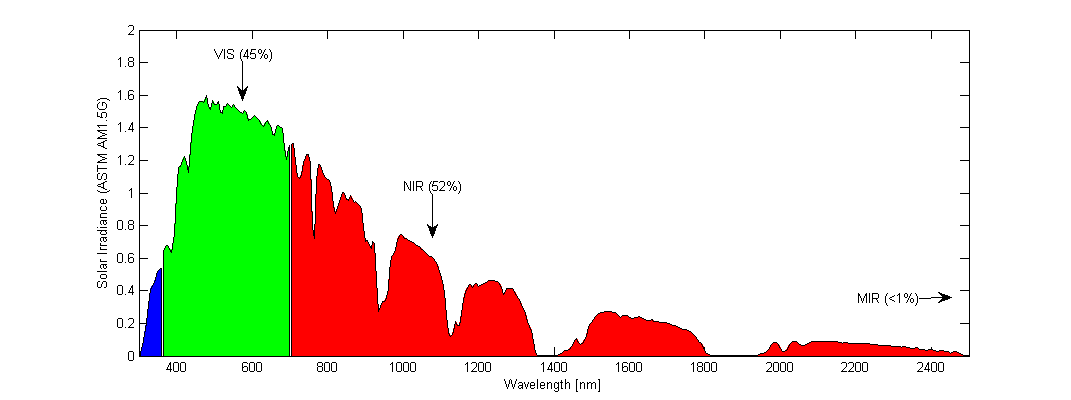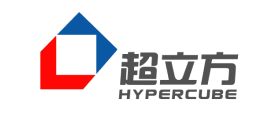The ARCoptix VIS-NIR DR Spectrophotometer
Measuring diffuse reflectance of solid samples from 360 to 2500nm
The ARCspectro VIS-NIR DR combines two spectrometers: a standard multichannel grating spectrometer that covers the visible spectral range (360nm-950nm) and the Arcoptix NIR scanning Fourier-transform spectrometer with an extended range InGaAs detector (900 to 2500 nm). Both spectrometers are connected to a 5 cm, internally illuminated integrating sphere which ensures illumination of the sample by perfectly diffuse light.

The ARCspectro VIS-NIR DR allows you to measure the reflectivity of materials and paints over the complete solar spectral range - from 360 to 2500nm. This is important for the painting, building or solar energy industries, because it provides crucial information about the solar energy absorbed and transformed into heat by those materials or paints.
Those charateristics make it an ideal tool for measuring the Total Solar Reflectance (TSR) according to the ASTM ® norms G173 and E903. The software included with the VIS-NIR DR automatically calculates the TSR value. The ArcSpectro VIS-NIR DR complete measurement system is proposed for a very competitive price. This offers an interesting alternative to other commercially available spectrophotometers which may be more versatile but are also slower, more complex, and much costlier
Presentation video of the ARCoptix VIS-NIR-DR
Characteristics
- Large wavelength range (360nm to 2500nm)
- Fast measurements (about 5 seconds)
- High resolution (5 nm)
- Easy maintenance
- Easy to use (no use parameters)
- Good inter-instrument agreement
- Cost effective
























